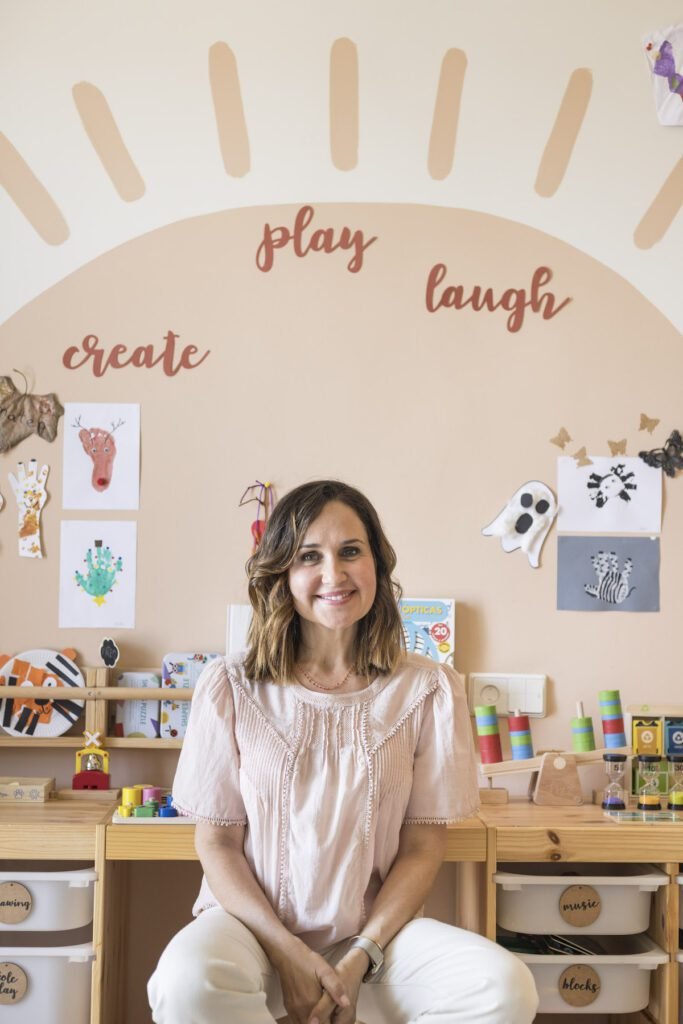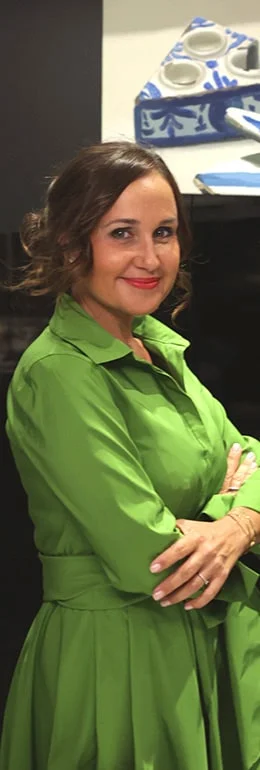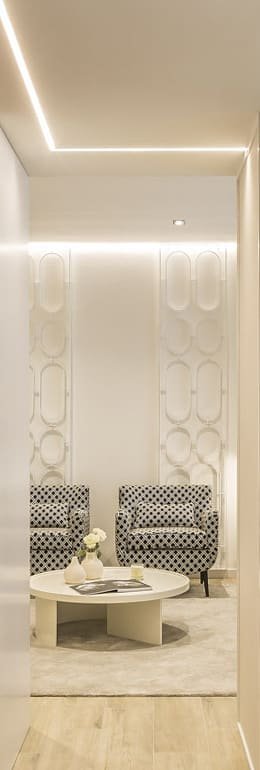

Interior design project applying the principles of a Montessori space:
♡ A room decorated according to the Montessori method, with furniture and interactive elements adapted to a child between three and six years old.
♡ A Montessori multisensory space, where children will be able to learn about some of the games and elements available to connect the child with their senses: Hearing, smell, taste, touch, thermal and stereognostic.
♡ A play area and fine psychomoticism adapted according to the Montessori method, where we can learn about the main games that Montessori has for knowledge of the environment and learning.
♡ An area of gross psychomoticity, where children will be able to move and exercise their body through simple elements proposed in the Montessori method.
♡ Examples of practical Montessori life: elements of adult life that incorporates the Montessori method.
Montessori Philosophy
The Montessori method is developed in an orderly, aesthetic, simple and real environment, where each element has its function in the child’s development.
A Montessori space must be prepared to integrate ages grouped into periods of 3 years, thus naturally promoting socialization, respect and companionship.
The Montessori environment allows the child to engage in work of interest, chosen freely and voluntarily. This fact provides the child with moments of concentration on tasks that should not be interrupted. Freedom develops within established limits that allow children to interact freely by exercising voluntary activities within a small society delimited by space.
Montessori materials are designed so that the child can explore the world, develop and evolve their basic cognitive skills. In this way the child can recognize errors for himself and be responsible within his own learning and self-knowledge of the environment.
In a Montesori environment, the adult is a mere observer and should only act as a guide; helping and stimulating the child, without intervening in self-learning and development of cognitive abilities.
Children must be able to act and think for themselves, developing their own autonomy and confidence, errors are healthy and repetitions of tasks are part of the method, since the child must recognize their own mistakes and repeat the tasks not by indication. someone else’s but of one’s own will.
This method of education based on the freedom and autonomy of the child, covers the educational periods from birth to adulthood, and has been recognized worldwide as one of the best and most effective methods of psycho-emotional learning for minors.

Montessori Interior Design
A Montessori interior design requires a large, open and bright space. The shelves, cabinets, coat racks, tables, chairs and other elements of the space must be designed and manufactured to suit the children because all the materials that are later placed in this space must be accessible to the child without any difficulty.
The materials for the furniture will always be natural elements, highlighting natural unpolished wood as the preferred material. You can also use wicker and other elements of nature. An ideal Montessori space will have land, water and healthy foods from nature available to the child. As for the game elements and activities, they will be multiple and varied.
Montessori from 0 to 3 years
Nest (2 months to 12/15 months)
El Nido is an environment that is specially prepared for babies before they can walk. At this early age the child cannot yet develop autonomy, so interaction and closeness between parents and baby is crucial. The activities focus on observing the child offering the first appropriate sensory activities.
Basic activities and psychomotor game



 .
.




Toddler (12/15 months to 3 years)
When children begin to walk, they can join the toddler group where they develop basic motor coordination, independence and language skills. Now it is appropriate for the child to be able to move in an enriching environment to experience structured contact with objects and other children for the first time. Materials for young children, based on years of observation, experimentation and study, are designed with precision.
Basic Furniture (Imitation of adult life)


Practical Life (Adult Imitation)





Montessori from 3 to 6 years
In this age group, children choose their activities from self-correcting materials displayed on open shelves that allow them to learn through the five senses. The most important task of the educator for children between 3 and 6 years old is to provide a foundation that allows them to acquire more specialized knowledge and skills throughout their school career. This foundation includes a positive attitude toward school; an inner security and a sense of order and pride in the physical environment; permanent curiosity; a habit of concentration; habits of initiative and persistence; the ability to make decisions; self-discipline; and a sense of responsibility toward other members of the class, school, and community.
Game: Sensory
1. Sense of Sight (shapes and colors)



2. Sense of touch (textures)


3. Thermal sense (temperature)

4. Sense of taste (flavor)

5. Sense of smell (aromas)

6. Stereognostic sense
(It allows us to recognize an object by touching it on all sides, or by palpating it as if we could not see. It is not only about exercising the sense of touch, which perceives the quality of the object with the hand, but also moving the arm around )


7. Auditory sense (sound and music)



Practical Life (Adult Imitation)


Environmental care


Person care



Montessori from 6 to 12 years
Children between the ages of 6 and 12 reach the peak of their mental abilities. They are now able to formulate hypotheses, use logic and reason, obtain information through research, and make assumptions. The child has reached the point of abstract thinking. This is a period of strong social interaction in which the child’s moral compass has advanced toward a desire not only to understand why humans act and react as they do, but also to discover ways to resolve Social problems.
Students develop both academic and social skills that they will use in their adult professional and private lives. For example, working with others, group problem solving, respectful conflict resolution, leadership, empathy and compassion. Montessori games designed for this age group are more sophisticated and require great mental acuity to solve.









